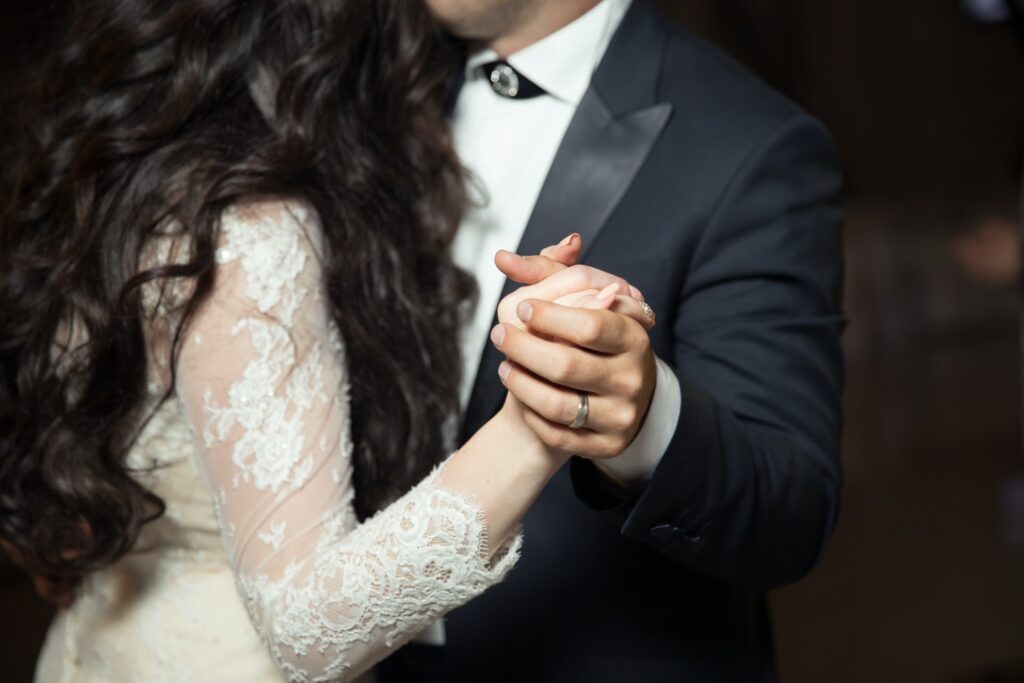For most people, a wedding is the single most important day of their lives, thus it's vital that everything goes smoothly on that day. One of the best elements of a wedding party, though, is the opportunity to get up and dance with the happy couple.
If you're still trying to determine what kind of dance to have at your wedding, or if you just want to make an assurance that you pull off every aspect of the big day with elegance and class, this blog post is for you. Common wedding dances, dance planning duties, and proper behaviour throughout the reception will all be covered in this article.
There are a variety of dances you can do during your wedding reception, but today we'll be discussing the "first dance" and the traditional dance between the father and daughter. We'll also discuss proper behaviour for when the rest of the party attendees join us on the dance floor.
Read on to learn more about the other wedding dances and how to prepare for them. From deciding on the right type of dance to following all the required protocol, this article will help you through the steps of organizing a dance. The first dance as couple is a traditional and memorable part of any wedding reception. Follow these guidelines to have a problem-free wedding day!
It takes a lot of time and effort to organise a wedding. All the little things, including invitations, flowers, and reception halls, need to be planned out. Maybe you haven't given much thought to the reception dances. Traditionally, the bride and groom dance with either the bride's or groom's parents, but other arrangements are possible!
We're not sure which dance style would be best for you. Newlyweds couple and their loved ones can gather to celebrate their love for one another with a night of dancing, which can be a thrilling way to incorporate some cultural traditions. When time is short and people only want a little something, the right music can do the trick (or maybe just really cheesy). Whatever helps them the most! Okay, so let's begin! To give you more wedding tips, check out our post on Top Wedding Blogs to Help You find Your Wedding Suppliers.
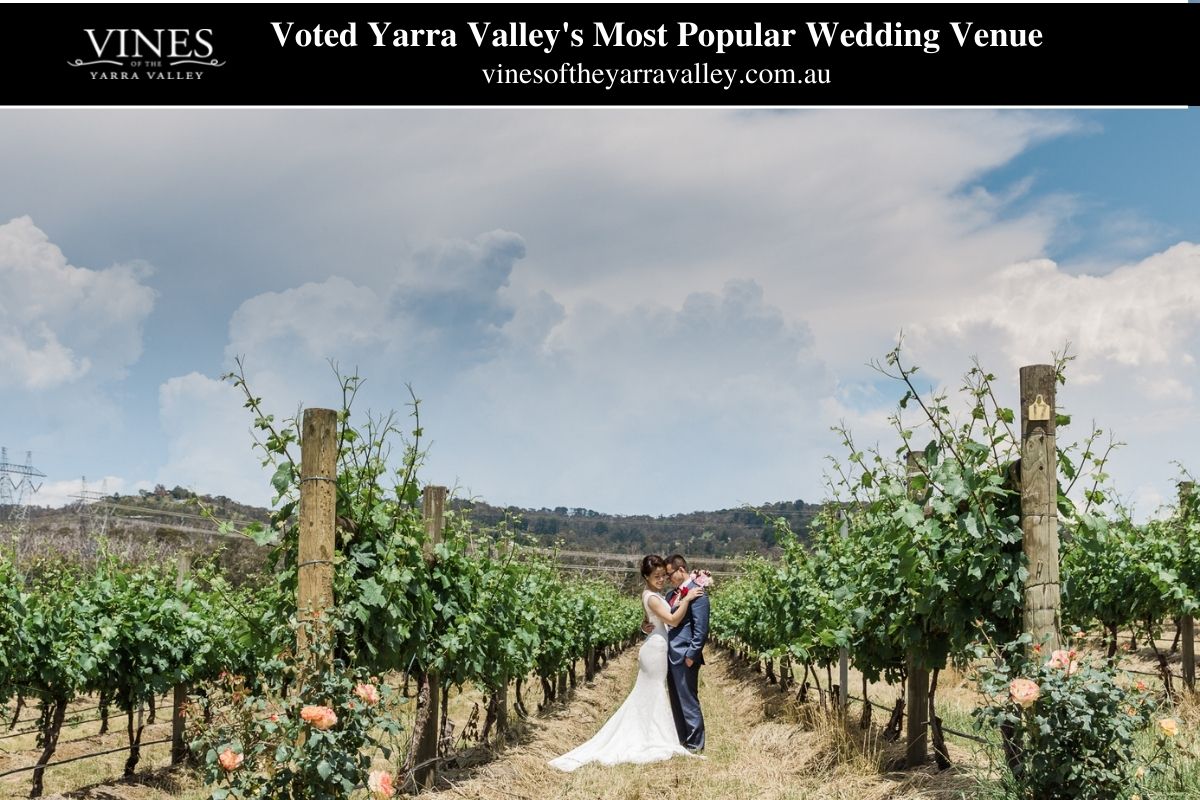
Procedures For Arranging The Dances At The Wedding
The first dance after the newlyweds have said "I do" is one of the most exciting moments of the party. In the first place, everyone can dance or sing along as much as they choose. Listen to the lovely music that has been playing in the background. The couple then performs a scripted first dance for their guests to enjoy. Now would be a great moment to snap some photos that truly represent what it was like to be there. There is proper protocol for the wedding dance. The newly weds have the option of choosing the dance sequence.
Rehearsal Dance Selection
Some partners may choose not to perform every dance at the reception. Instead, prioritise them a few months in advance to give yourself plenty of time to get ready.
Reserve A Dancer Now
Many married pairs are interested in learning a special routine choreographed by an expert. Despite the fact that everyone has their own unique pace, getting started early is usually a good idea because the wedding planning process may get hectic as the big day approaches. Practicing makes perfect, but we also want them to be able to perform with ease and assurance. Therefore, you should begin between two and three months before the wedding.
Participant Involvement: Making Contact
Allow adequate time for rehearsals and music selections for the parents' dance and the anniversary dance.
Pick Some Tunes, Get The Band Or Dj Setup Ready.
Make sure your DJ or band can play all of the songs you've selected for your wedding's various dances.
Practice
While it may be discouraging to hear, the single most crucial factor is actually practise. It's easier to have fun when performing and adding flourishes like smiling if you don't have to overthink the routines and memorise the choreography.
Have A Good Time
Those who attend your wedding do so out of affection for you and to share in your joy. At that time, it's best to stop thinking about the choreography and focus on having fun on stage. No one else can perform the choreography as well as you can if you just relax and enjoy yourself.
When And Where To Throw A Dance Party
When all of your guests, young and old, are out on the dance floor having a great time, you know you've planned a memorable wedding. Even if you're not the one in charge of the party, being the first person to hit the dance floor may be nerve-wracking. MJ Entertainment has some advice to help you and your friends feel more at ease once you hit the floor.
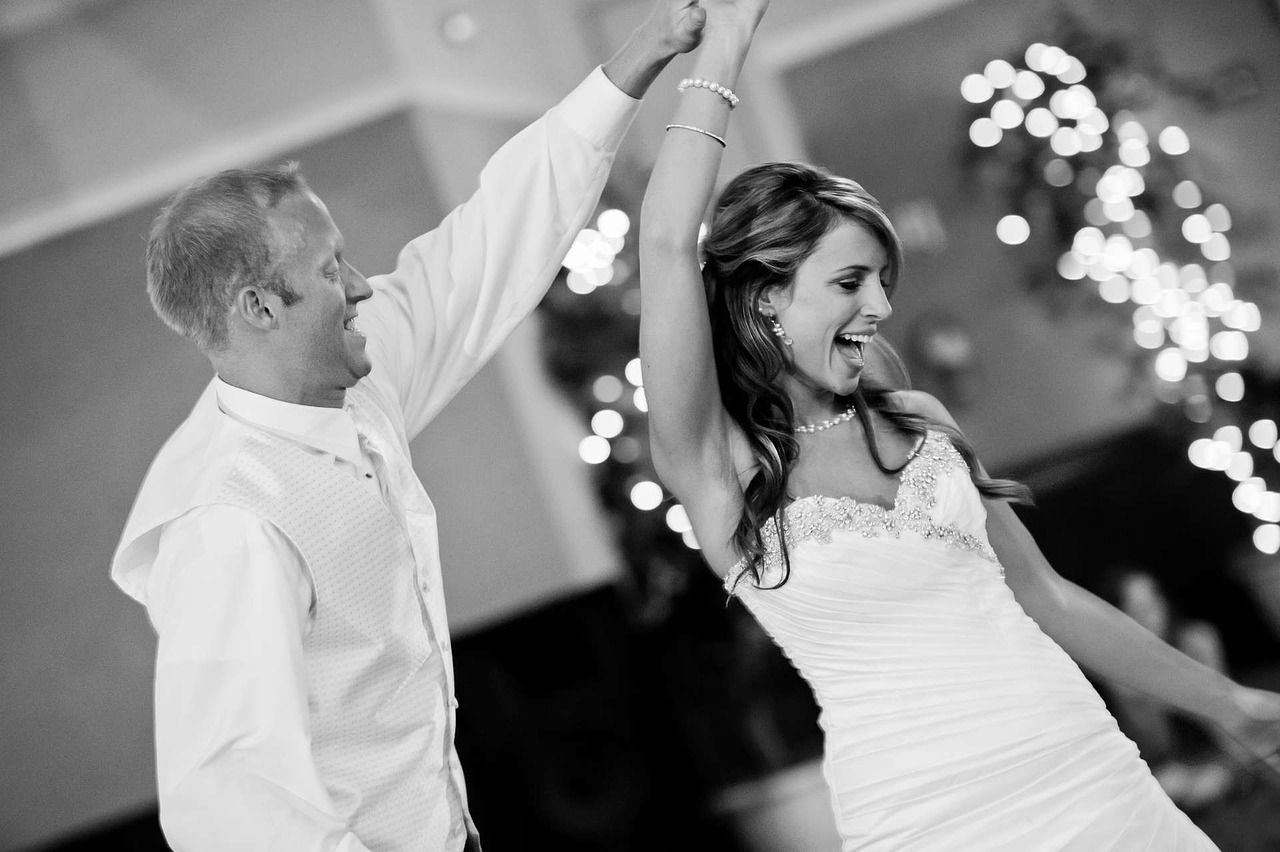
Get Things Started Off Properly
After the first dance and any other special dances have been performed, play a more energetic music for the rest of the wedding party or close friends to dance to. Then, once the dance floor is open, have the band leader invite your wedding party to join you there. It doesn't have to be planned or cheesy, but getting everyone on their feet and dancing together can help ease tension and make everyone feel more comfortable.
Recognize Your Company
Slow things down with these special dances for couples. The next step is to invite some special visitors to join you on the dance floor.
Don't Doubt The Band
Have your band's leader gauge the atmosphere. Give the DJ some leeway to make minor adjustments to the setlist if guests seem to be flocking towards particular tracks.
Lay Out A Plan
Make sure there are no tables in the way of the band's view of the dance floor. The value of positioning the band in front of the dance floor cannot be overstated. The band and the audience must share an energetic connection.
Provide Ease Of Access To The Bar
Put the bar close to the lobby entrance if at all possible. People usually congregate around the bar area. Because of the near proximity to the music, participation is almost mandatory.
Begin Socializing Promptly
After the toasts, during the salad course is a great time for the newlyweds to visit each table and interact. After dinner, you can immediately begin celebrating by cutting the cake and dancing with the parents.
People Around You Will Benefit From Your Upbeat Disposition.
Finally, and perhaps most importantly, if the bride and groom spend a lot of time on the dance floor, so will the guests. The guests will be more energised to party with the newlyweds if they see them on the dance floor.
The Opening Dance
One of our favourite parts of the wedding day is photographing the first dance of the bride and groom. It's during this period that a couple's genuine feelings for one another become apparent. It's likely that there will be photographs taken of the newlyweds that serve to symbolise their union. Then, with the lights low and the audience gathered, they perform a highly choreographed (or not) performance to a song that holds special value to them.
Dreadful Lighting, Suitable Only For Ambience And Not Photography
You can never be sure how the lighting will be, so you always have to be ready to make quick adjustments. As a form of ambience, DJs frequently prefer to turn down the house lights and replace them with their own disco lights. To capture the scene with its natural lighting and feel, you'll need to quickly modify the camera's settings.
- NB: Converting to black and white is preferable to the muddy and dreary appearance of colours that might occur in low light.

What Equipment Is Needed For The Wedding's First Dance Photos?
It's crucial that the newlyweds enjoy each other's company and feel at ease before their first dance. At most weddings, alcoholic beverages play a significant role in the mood and actions of the bride, groom, and their guests beginning at the reception (more on that below). You might initiate conversation with them in advance and tell them to focus on each other and forget about you. Photographers should exercise prudence, but they are free to get close for more intimate closeups by using a wide-angle lens.
We think it's crucial to take a variety of images, including some of these close-ups and other wider, more contextual shots with visitors in the backdrop. The wedding album is a great place to showcase a series of images, so if you have the opportunity to do so, do so.
Couples should not be embarrassed by the first dance, despite the common misconception. Relax and "be together." Just do it and enjoy yourself (as in the photo above). The way you approach your dance is up to you, but try not to stress yourself and focus on having fun. For photographers, the first dance is an absolute must; it caps off the album perfectly and can yield stunning results. Need help planning your wedding? Check out our list of Wedding Event Planners here.
We’ve Danced Together, Now What?
In most cases, the happy couple will invite their guests to join them on the dance floor before the first dance song ends. As everyone gets up to dance to the second song, it can be difficult to work your way through the crowd and obtain images of the dancing and excitement. Guarantee that this won't bother you in any way. The groom usually dances with his mother, while the bride moves to the beat of the drum with her dad.
Evening's Spectacular
Later in the day, guests can choose from a wide variety of activities to keep them entertained. While some couples prefer a live band, others go with a DJ. Some people even choose both, just to mix things up a bit. Comedians and drag queens are among the performers we've seen at weddings we've attended.
Comedic or musical performances aren't the only kind of entertainment you can provide for your guests. Other options include a photo booth, garden games (great for youngsters in the summer), candy cart, trivia night, dance-off, talent show, and many more. Couples, on the other hand, consistently choose the same DJ or band for their parties.
The Last Wedding Of The Day, Photographically Speaking
After the first dance, you're usually welcome to stay for another half an hour. By that time, you will have taken countless photographs throughout the day, including images of the happy couple and their guests enjoying the dance floor. Just be sure to touch base with the couple before you go; if they need me to stay later, I have no problem staying.
Partner Dance Order At Wedding
The first dance will be shared by the newlyweds. Commonly, it looks like this. After that, the parents dance with the happy couple, first the father with the bride and then the mother with the groom. Next, the groom will dance with his new mother, while the bride will dance with her future father-in-law. The newlyweds are formally welcomed into their new families with this dance. It is customary to invite the step-parents of the bride or groom to the wedding reception.
The parents pair up after dancing with the couple. They then proceed to pair off with the other set of parents. Next, the maid of honour dances with the groom and the best man dances with the bride. After the bride and groom, the bridesmaids and ushers onto the dance floor. After that, everyone in attendance can get up and dance.
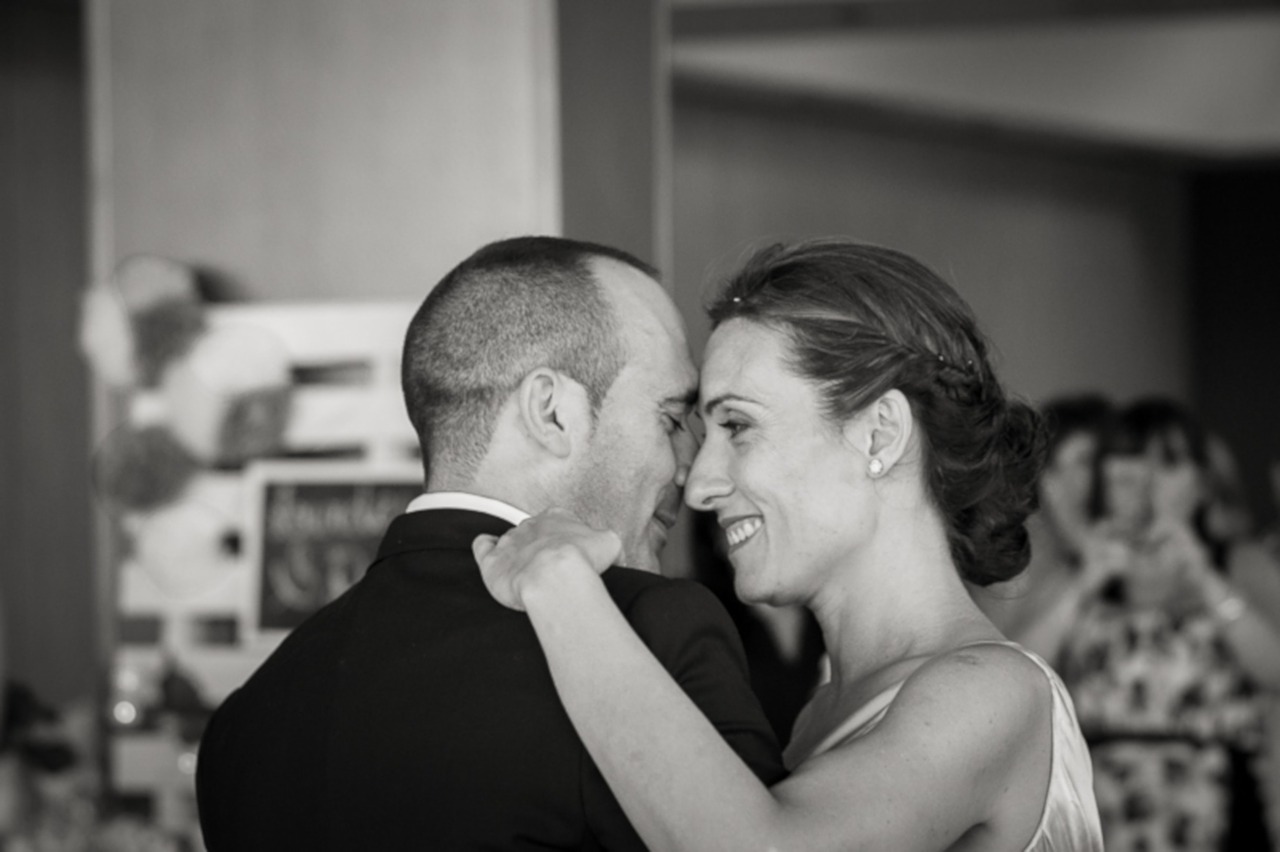
Rehearsal Dance Routine Timing
You just exchanged vows; celebrate in style! One of the most common activities at a wedding reception is dancing. The first dance as husband and wife, dances with the parents, and other such customs bring a special touch to the reception.
But how do these wedding dances usually go down? At first look, the dancing timeline may not seem like a big deal, but sticking to it will guarantee that your reception moves well and offers guests plenty time to eat, drink, socialise, listen to toasts, and, of course, get on the dance floor without feeling rushed or, even worse, bored.
Create a wedding day timeline with the help of your planner or the venue organiser, and distribute it to all of your other vendors. It's probable that the DJ or bandleader will also serve as the party's emcee, so they'll play a vital role in setting the mood and keeping the party moving along. A wedding reception dance schedule can be learned if you're ready. See below for a sample schedule for your celebration.
The Procession Of The Bride And Groom And Their Wedding Guests
Although the bride and groom's entry to the celebration is not technically a dance, it is nonetheless a memorable moment on the dance floor. The bridal party, comprising the bridesmaids, groomsmen, best man, maid of honour, matron of honour, bridesmen, grooms women, flower girls, ring bearers, and anybody else playing a significant role in the ceremony, lines up as cocktail hour winds down (often in pairs).
When everyone has arrived and found their seats at the reception, the DJ or emcee will play some upbeat music and call out the names of the wedding party members as they enter the room in pairs. Members of the wedding party could dance in a circle instead of sitting down. The newlyweds arrive to the reception last to thunderous cheers from their guests.
The First Waltz
The newlyweds may start their first dance practically as soon as they enter the reception. Assuming that guests will be dining following the opening, the first dance would follow dessert. A newlywed couple's first dance is an exciting milestone in their new life together. To prepare for their big day, the couple may have attended dance lessons or they may have decided to wing it.
Hora (For Jewish Couples)
When it comes to Jewish weddings, the first dance is often followed by the hora, a boisterous circle dance. You can also have the major dance section of the event start after dinner. During the hora, the couple and their parents are traditionally hoisted into seats.
Parents Engage In Dancing Activities
The father-daughter and mother-son dances, as well as any additional parent dances, might take place at various times throughout the wedding reception. In some cases, the first dance is followed immediately by a parent dance. Sometimes these dances will occur during the meal, while other times they will occur after the meal, after the toasts, or after the cake is cut.
In traditional heterosexual weddings, the bride dances first with her father and then with the groom's parents. There may be a few extra guests in the end, such as grandparents. It's up to the couple to decide how they'd like to handle parent dances, and that includes LGBTQIA+ couples who may wish to dance with step-parents or other significant others.
Group Dancing At A Wedding
Wedding guests are welcomed to the dance floor after the parents have finished their routine. It is customary for the best man and maid of honour to dance first, followed by the rest of the wedding party. If the parent dances are scheduled for after dinner, the happy couple may decide to forego the wedding party dance and instead invite all of the guests to join them on the dance floor. If you think your guests would need a little encouragement to start dancing, though, having the wedding party do so might be a nice idea.
There Will Be A Party
All other visitors are cordially welcomed to make their speeches immediately. A skilled DJ or bandleader can gauge the mood of the crowd and play a set that gets people of all ages and backgrounds on their feet and moving to the beat.
Celebration Of Dance
The anniversary dance, often called the bouquet dance, is a touching ritual that some newlyweds choose to incorporate into their celebration. At first, a slow love song is played and all the couples in the room are welcomed to the dance floor. The emcee or disc jockey then requests that any couples who have been married for less than a year take a seat.
After that, the emcee will ask the other couples to leave the dance floor until only the longest-married pair is remaining. Then, if there isn't a bouquet throw, the longest-married pair gets the bouquet (or, if there is, a round of applause from the other guests).
Throwing The Bouquet And The Garter, And Dancing
In classic wedding ceremonies, the bride throws her bouquet to the available female guests, and the husband pulls the garter from the bride and tosses it to the available male guests. The "victors" are then obligated to dance with each other.
You are not obligated to do the garter and bouquet toss during your reception. Many couples find that doing so is awkward and reaffirms harmful gender stereotypes, not to mention that it breaks up the flow of the party.
Dances Following The Cake-Cutting
When it comes to cutting the cake at the reception, some couples prefer to do it right after dinner, while others prefer to save it for later. If the latter is your plan, the cake cutting should be followed by another set of dancing. At this point in the reception, your elder guests may have left, so the dance floor may be opened up to the younger crowd and the more up-to-date music can be played.
Performing Cultural Dances For Money
A money dance, often called a dollar dance or apron dance, is a common custom and traditional part of the wedding reception dance order in many countries. The money dance can be conducted in a variety of ways (such as guests paying to dance with the couple), but always results in monetary compensation for the partners. When the reception is winding down, this dance is often performed.
This Is The Last Dance
The couple can choose a slower, more emotional song for their final dance of the night, or they can go with an energetic crowd-pleaser. A more upbeat song is recommended if there will be an after-party following the wedding.
Additional Dance Options
The wedding dance usually goes like this. Modern couples, however, often switch up the traditional sequencing of their dance moves. When parents are divorced, a situation like this can be difficult for everyone involved. This is why the newlyweds' first dance is still a staple at modern weddings. There is no logical progression after that.
The bride's party is welcome to come. Occasionally, the guests join in with the entourage. Most couples prefer this arrangement since it's more relaxed. Another method to dancing at a wedding is following the entire dance routine of the bride and husband; the wedding entourage will also execute a full routine. However, this will require study time and may be costly. The truth is, though, that this is one of the modern substitutes utilised at weddings.
After the main meal has been served, the newlyweds traditionally dance for the first time. It is customary to have this done soon after the cake has been sliced. To begin, the Master of Ceremonies will need to make the official announcement that cake cutting time has arrived. This action will announce the start of the dance.
The visitors should not interrupt the couple's dance routine if it is a lengthy one. The host should instead make an announcement saying that people can't enter the dance until it's over. To avoid any interruptions to their dance routine, this will ensure that the floor is completely empty for the couple.
They can decide the dance sequence in whatever way they like. Since it is their wedding, they are free to start whatever custom they like. In any case, the couple should inform the dancers ahead of time. If they don't know when to cut in or join the dancing, they need to be told. The master of ceremonies might call out the dancers in sequence. The number of songs played at a wedding will increase if the line of dancers is long.
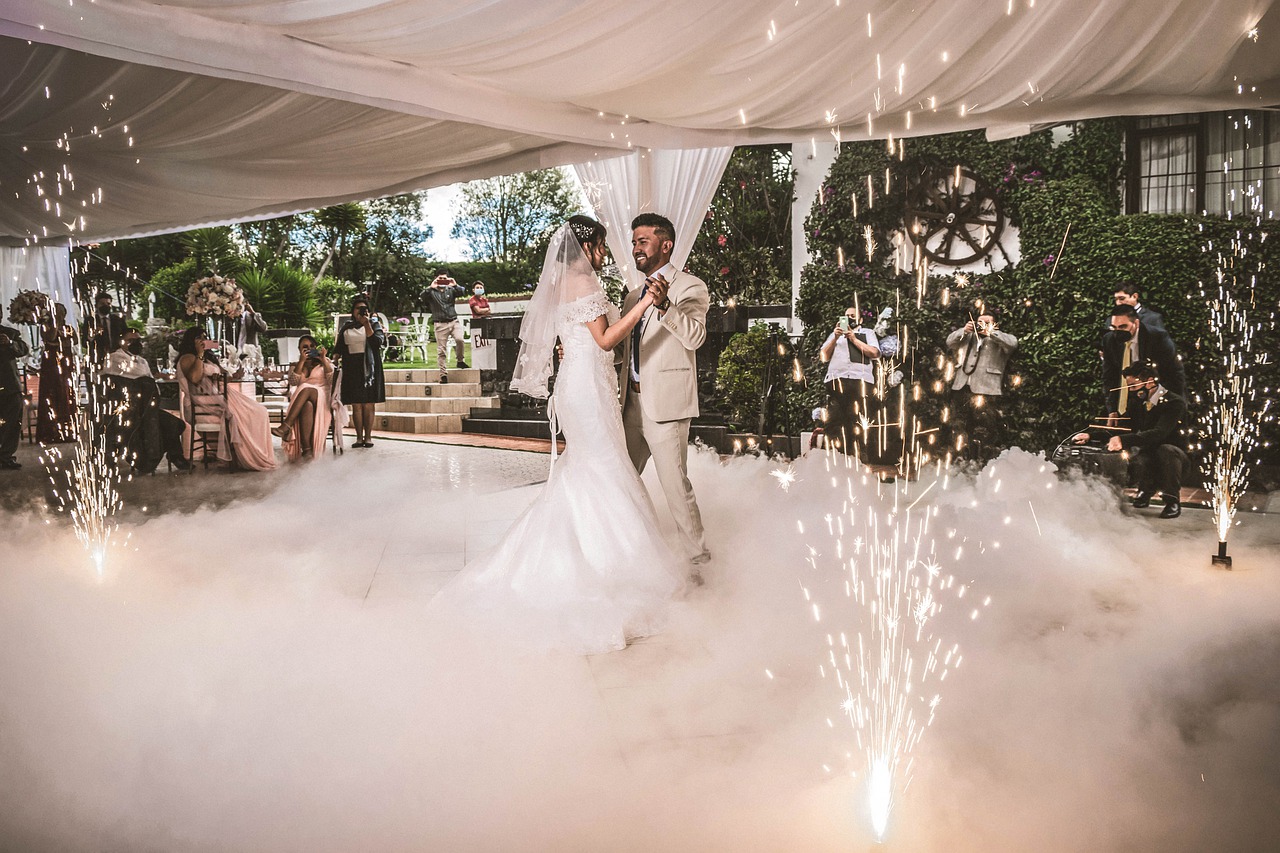
Questions And Guidance For The Wedding Dance
Indeed, guests at the majority of weddings can be found grooving it up on the dance floor. There isn't a more fitting way to mark the beginning of a marriage. Many weddings, however, also feature traditional dances in honour of notable attendees.
The newlyweds will be able to show off their moves for the first time on the dance floor during the first dance. The parents' dance is a wonderful opportunity for the couple to bond with their own parents. The money dance, in which visitors circle the couple and slip them cash, and the anniversary dance, which honours the couples who have been married the longest, are less well-known.

How Many Different Wedding Dances Are There Traditionally?
The four most important dances are the "first dance," "parents' dance," "anniversary dance," and "money dance." The Jewish hora is a classic circle dance, and the Indian raas garba is a night of folk dances done in honour of the bride and groom.
Who Doesn't Do The Wedding Dance?
In general, there are a few guidelines to follow. For instance, the bride and groom usually lead the first dance. After that, they and their parents perform the parents' dance (Traditional father-daughter dances now involve both parents, therefore the name.)
Those celebrating an anniversary can either honour the longest-married couple in attendance or honour all the couples in attendance who have been married for more than a certain number of years. Guests of any socioeconomic status are encouraged to join in on the "money dance" at the reception.
Browne has witnessed couples performing traditional dances for larger crowds. There has been a growing trend of wedding receptions beginning with a slow dance by the newlyweds, followed by a high-energy Bhangra/Bollywood performance with the bridal party and guests.
When Should Wedding First Dances Begin?
The first dance and the dance with the parents can either kick off the reception or be saved until later. After the reception is over, guests will typically participate in the money dance (also known as the apron dance or the dollar dance). Guests can then wish the newlyweds well into their future by releasing balloons in the shape of hearts. The secret to a successful wedding dance is to keep it brief and sweet, regardless of when it is performed. Your goal is to have them begging for more.
Must We Do All The Wedding Dances?
They are most certainly not required. We suggest that couples think about including dances because they are lively and festive and add joy to the event.
During The Dances, How Do The Guests Spend Their Time?
Some of the dances at a wedding are interactive. For instance, everyone is welcome to participate in the money dance, and many senior couples enjoy the opportunity to show off their abilities during the anniversary dance. Guests will often stand as observers throughout the parents' dance and the first dance.
Browne has noticed a rise in the number of people taking part in the wedding's customary dances. There has been a rise in the number of interracial and multiracial weddings, and as a result, many couples are choosing to start the celebrations off with dance lessons where they not only teach their guests some basic Bollywood and Bhangra steps, but also incorporate them into their own performances and general dancing. You'll have a great time.
Must There Be Choreography For The Dances?
Yes, of course not. It is not required for couples to have a scripted routine for their first dance (though some parents may choose this for their own dance). As touching as it can be to see a newlywed couple twirl and bounce over the dance floor, there is something special about watching them leisurely dance together. Regardless of whether or not there is choreography for the dance, the adage "less is more" holds true. In other words, be sure that the choreography you produce complements your dancing style and is not too difficult for you to perform.
When It Comes To Wedding Dances, What Sort Of Music Do People Often Listen To?
The music for the dance is up to the couple and their dance partners. Some people chose songs that are special to them (maybe it was playing during their first date or a parent used to sing a song to his daughter when she was younger?) Always choose a tune that is appropriate and to which you feel comfortable dancing. Pick a song you relate with. Your teachers are going to repeat that to you a gazillion times.
Conclusion
A wedding's "first dance" is a high point in the festivities. This article will guide you through the process of preparing a dance for your wedding, from selecting the appropriate sort of dance to adhering to all the necessary regulations. What follows is information about the various dances performed at weddings and how to practise for them. The first dance as husband and wife must follow specific rules. The newlyweds get to pick the dance number they want to do.
If you want to have plenty of time to get ready, it's best to get started early. It's much simpler to enjoy oneself on stage if one doesn't have to give too much thought to the acts they're performing. Following the first dance, have the guests and wedding party dance to some upbeat music. Get some special guests on the dance floor with you. If the newlyweds are out on the dance floor with their guests, it will get everyone in the party spirit.
It's important for the newlyweds to relax and have fun with each other before their first dance. DJs will often dim the house lights and replace them with their own disco lighting to set the mood. Photographers should use caution but are welcome to move close for more intimate closeups. At the reception, dancing is often a focal point. Traditional dances at a wedding reception, such as the first dance as a married couple and dances with the bride's and groom's parents, are a lovely addition.
A photo booth, candy cart, trivia night, dance-off, or talent show are some other ideas. If you're up for it, you can study up on the dance routines that will be performed at the wedding reception. The hora is a lively circle dance that commonly follows the first dance. The main dancing portion of the event can sometimes begin later, after dinner. A example agenda for the event is provided below.
There is no set schedule for when the father-daughter and mother-son dances must occur at the wedding reception. The bride traditionally dances with her father during a heterosexual wedding, followed by a dance with the groom's parents. There may be a desire among LGBTQIA+ couples to dance with their stepparents or significant others. The bride traditionally tosses the bouquet to the available female guests, while the groom traditionally removes the bride's garter. The so-called winners must then dance with one another.
The order in which couples perform their wedding-reception dances is often reversed in today's modern ceremonies. The time has come for the cake cutting, and the Master of Ceremonies must make the announcement. Taking this step will signal the beginning of the dance. Money, Parents, First, and Anniversary Dances are the Big Four. No matter what time of day or night the wedding dance is performed, the key to its success is to make it short and sweet.
All guests, regardless of means, are invited to participate in a "money dance" during the celebration. The anniversary dance is a great opportunity for senior couples to show off their dancing talents. Browne has seen an increase in guests participating in the traditional dances at the wedding. A choreographer is unnecessary for a scripted first dance routine. All decisions about the dance's soundtrack are made collaboratively by the couple and their partners.
Content Summary
- However, dancing with the newlyweds is one of the greatest parts of any wedding reception.
- Regular wedding dances, the responsibilities of the dance planner, and appropriate behaviour at the reception will all be discussed.
- Two of the most common dances at wedding receptions are the "first dance" and the dance between the father and daughter.
- What follows is information about the various dances performed at weddings and how to practise for them.
- This article will guide you through the process of organising a dance, from selecting the appropriate form of dance to adhering to all the necessary procedure.
- One of the most iconic and unforgettable parts of any wedding reception is the first dance as husband and wife.
- The wedding dance should be performed according to basic etiquette.
- Instead, prioritise them several months in advance to give yourself plenty of time to get ready.
- In the aftermath of the first dance and any other special dances, the bridal party and close guests might let loose to some upbeat tunes.
- Then, when the time comes, have the band leader invite the wedding party to the dance floor.
- It's Safe To Say The Band Can't Be Ruined Send your band's frontman out to take the temperature.
- Preliminary Dance Performance When it comes to wedding photography, the first dance of the bride and groom is always a highlight.
- You'll need to swiftly adjust the camera's settings to capture the subject with its natural lighting and atmosphere.
- Before the first dance, it's important that the newlyweds relax and have fun together.
- If you have the chance to display multiple photos in the wedding album, you should take advantage of the opportunity.
- Contrary to popular belief, couples should not feel awkward during the first dance.
- To unwind and "be together," couples can choose between a live band and a DJ.
- On the other hand, couples tend to hire the same DJ or band every time they throw a party.
- Photographically Speaking, This Was The Day's Last Wedding There is normally a half-hour grace period following the first dance.
- Wedding Dance Routine The newlyweds will have the first dance together.
- Convention dictates that the step-parents of the bride and groom be invited to the wedding reception.
- Traditional dances at a wedding reception, such as the first dance as a married couple and dances with the bride's and groom's parents, are a lovely addition.
- With the assistance of your planner or the venue organiser, make a wedding day timeline and give it to all of your other service providers.
- If you're up for it, you can study up on the dance routines that will be performed at the wedding reception.
- A example agenda for the event is provided below.
- The wedding party might execute a round dance in place of chairs.
- One of the most memorable moments of a couple's new life together is their first dance.
- The parent dance may follow the first dance in specific situations.
- Forego the wedding party dance and have everyone join the newlyweds on the dance floor if the parent dances are planned for after dinner.
- You can choose not to participate in the garter and bouquet toss at your wedding reception if you so choose.
- If the latter is the case, the dance should continue after the cake is sliced.
- This is why, even in contemporary nuptials, the newlyweds' first dance remains a traditional highlight.
- The newlyweds' first dance usually takes place after the main course has been served.
- Cutting the cake is traditionally the first order of business, therefore the Master of Ceremonies must make the appropriate statement.
- Taking this step will signal the beginning of the dance.
- The MC may announce the dancers one at a time.
- During the first dance, the newlyweds will get their first chance to show off their dancing skills to their guests.
- In a marriage, there are four major dances: the "first dance," "parents' dance," "anniversary dance," and "money dance."
- All guests, regardless of means, are invited to participate in a "money dance" during the celebration.
- The reception might start right away with the first dance and the dance with the parents, or it can be kept for later.
- No matter what time of day or night the wedding dance is performed, the key to its success is to make it short and sweet.
- The dances during a wedding can get rather lively and even involve the guests.
- The money dance, for example, is open to anyone who wants to try it, and many elderly couples look forwards to the anniversary dance as a chance to show off their moves.
- Many guests simply watch from the sidelines as the bride and groom dance with their parents and the bride and groom dance.
- Browne has seen an increase in guests participating in the traditional dances at the wedding.
- You're in for a wonderful time.
- When it comes to dance, the cliché "less is more" is always true, regardless of whether or not there is choreography.
- All decisions about the dance's soundtrack are made collaboratively by the couple and their partners.
- Get something you can really connect with musically.
Frequently Asked Questions
Most couples will clearly state the dress code on their invitations, so guests need to pay attention to their wishes. However, there is one wedding guest etiquette rule that all the experts agree on: Guests should never wear white, ever! ... “Under no circumstances should you wear white to a wedding.
In a heterosexual partnership, the bride dances with her father, and the groom dances with the bride's mother. After that, the bride's parents dance together, the groom asks his mother to dance, then the groom's parents dance together.
Talk personally (not over the microphone) to the remainder of the bridal party to get them up. Have the Bride's and Groom's parents on the dance floor after a minute or so. At the end of the first Bridal Waltz, announce: “Ladies and Gentlemen, (Bride and Groom) invite you all to join in the dancing.”
- Do hire a wedding band. ...
- Don't bend your wedding budget. ...
- Do hire a professional wedding photographer. ...
- Don't do your own hair and make-up. ...
- Do remember you're in charge of the guest list. ...
- Don't forget about life after the big day. ...
- Do wear in your wedding shoes. ...
- Don't Rush Down the Aisle!
Your first dance should be between 2.5 to 3 minutes long. Unless you are a professional dancer, dancing in front of people for more than 3 minutes could feel like forever! Plus, you don't want to bore your guests with the limited dance moves you have.

